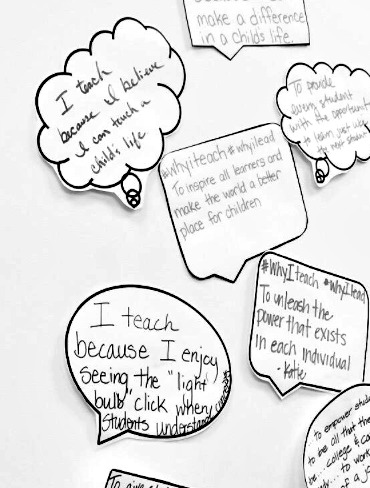As the doors of schools start to open and educators make their way back, wondering where their break went, it is important to kick off staff days with that important question: “Why do you teach?”
These conversations are often sacrificed and lost in the agendas filled with safety procedures, district protocols, and new literacy programs. As we get ready to “go,” leadership teams need to value this time and create spaces in their planning days to allow their educators and themselves to reflect upon why they choose to teach. Beliefs and pedagogy go hand in hand. We can get caught up in the “summer wasn’t long enough,” “I’m not ready to come back” mindset, that it impacts how we view and start off the new school year. Tapping into the purpose of what we do, why we do it, for whom we do it, and how we do it, will serve as the foundation to a successful year.
Education is the most human profession; we are there to serve and to learn, to support and be supported. Therefore, exploring our beliefs and defining our passions is not a one-time professional development activity, but these exercises should serve as a system for our own personal checks and balances. I just had breakfast with my best friend who completed her first year in a traditional calendar school after teaching ten years in a year round school. She said, “It’s exhausting. There were so many times when I felt burned out.” This sentiment is shared by educators around the world. Teaching requires high energy; you have to be “on” all the time. With that being said, it is critical to reflect and build systems to support what we do. It should not be relegated to a one day pd — it needs to be ongoing to ensure high quality teaching and learning .
The “why I teach” question is not just the social/emotional part of professional development, but it truly roots itself in pedagogy. Dr. Khader links beliefs to pedagogy as the driving force behind what happens in the classroom, “What teachers do in the classroom is said to be governed by what they believe, and these beliefs often serve to act as a filter through which instructional judgments and decisions are made.” Therefore, as good practice, we must reflect on our beliefs, integrate them into professional learning, and find ways throughout the year to build upon them in order to create the best learning environments for our students and teachers.
#whyIteach is a movement on social media that calls for educators to reflect and share out their dedication to students–so as we embark on our 2018-2019 school year, we cannot get absorbed by the hustle and bustle of logistics, but instead, remember why we do what we do and for whom.
Diana Cornejo-Sanchez
Latest posts by Diana Cornejo-Sanchez (see all)
- Reflexiones de una Educadora de San Diego Sobre el Cierre Temporal de la Frontera de México y Estados Unidos - November 27, 2018
- Reflections of a San Diego Educator on the Temporary Closure of the U.S.-Mexico Border - November 26, 2018
- Una Cosa es Promover el Acceso a la Universidad y otra es Asegurarse de que los Estudiantes Obtengan sus Diplomas - September 28, 2018
- It’s One Thing to Promote College Access, It’s Another to Make Sure Students Complete Their Degrees - September 26, 2018
- Educadores y Padres: ‘The Hate U Give ‘ Vale la Pena Leerlo - September 17, 2018

